Serving women sizes 10-30, BloomChic took the plus-size market by storm in 2021. Based in Los Angeles, California, the brand delivers affordable, size-inclusive apparel, inspiring consumers to “live with ease, dress with joy.” However, despite empowering real bodies and promoting inclusivity, is BloomChic fast fashion? Let’s find out.
Is BloomChic Fast Fashion? Our Verdict
While BloomChic celebrates size inclusivity, it qualifies as fast fashion. The brand heavily relies on non-biodegradable, synthetic fabrics. Besides, its low prices imply potential labor exploitation practices, as the brand sells dirt-cheap clothing while still making a profit.
Inclusive But Not-So-Sustainable?
The concept behind BloomChic is truly revolutionary in terms of female empowerment. In an industry, which pushes a certain body shape, the brand breaks all the stereotypes around the female body, making women feel empowered with mid- and plus- apparel.
BloomChic proudly showcases its garments on real women — be it influencers, professional models, or ordinary people — while refusing to edit their bodies in pictures. What’s more, their models come from different backgrounds, as the brand promotes the diversity of skin tone, race, ethnicity, disability, and sexuality.
Does all this sound too good to be true? Well, when it comes to sustainability, the brand is making some progress, however, its overall impact is still deleterious.
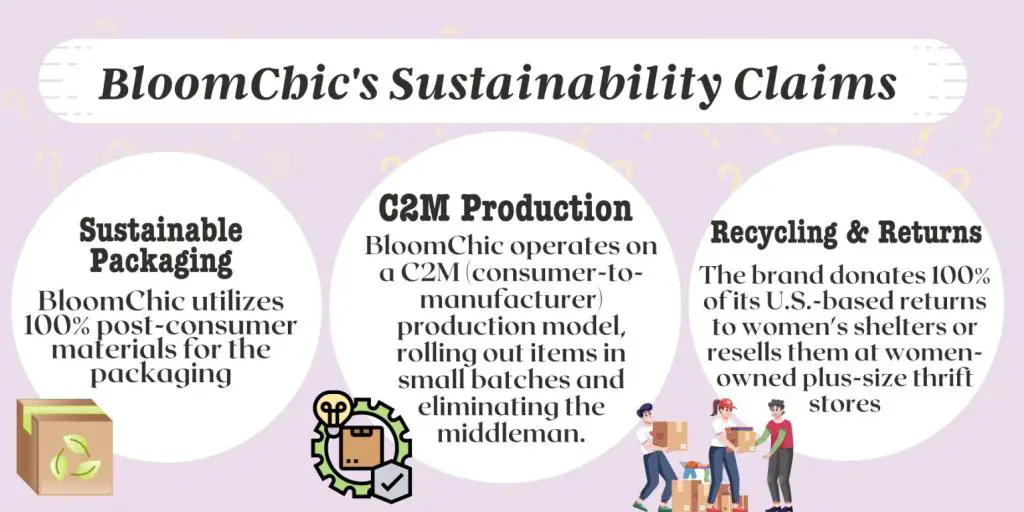
BloomChic’s Sustainability Initiatives
Let’s start with the packaging. In 2022, BloomChic switched to eco-friendly bags made of 100% recycled materials, which is something to appreciate. What’s more, it has also adopted a new production model, in which it predicts inventory more accurately and avoids overstock.
As a result, the brand orders clothes in small batches, and by this, it claims to accumulate less textile waste than most ultra-fast fashion brands. Despite these efforts, the brand’s sustainability measures are far from comprehensive. Critical gaps remain, particularly in recycling and labor practices.

BloomChic’s Returns Program: Circular or Not?
As mentioned on its official website, BloomChic either donates 100% of its U.S.-based customer returns to women’s shelters or resells them at plus-size-friendly thrift stores. Yet, does this mean real circularity?
Generally, it’s a common practice for retailers to discard customer returns. Sometimes, they resell the undamaged products that look like new; other times, when the goods come back damaged, they often send them off to landfills. BloomChic seems to reject these practices, directing its unsold inventory towards seemingly-sustainable donation programs.
However, this practice isn’t as eco-friendly as it appears. At My Eco Closet, we’ve analyzed similar claims from numerous fast fashion brands and found that many are misleading. BloomChic is no exception — its strategy of flooding women’s shelters and thrift stores with excess inventory serves as a way to justify overproduction, masking the root issue with greenwashing.
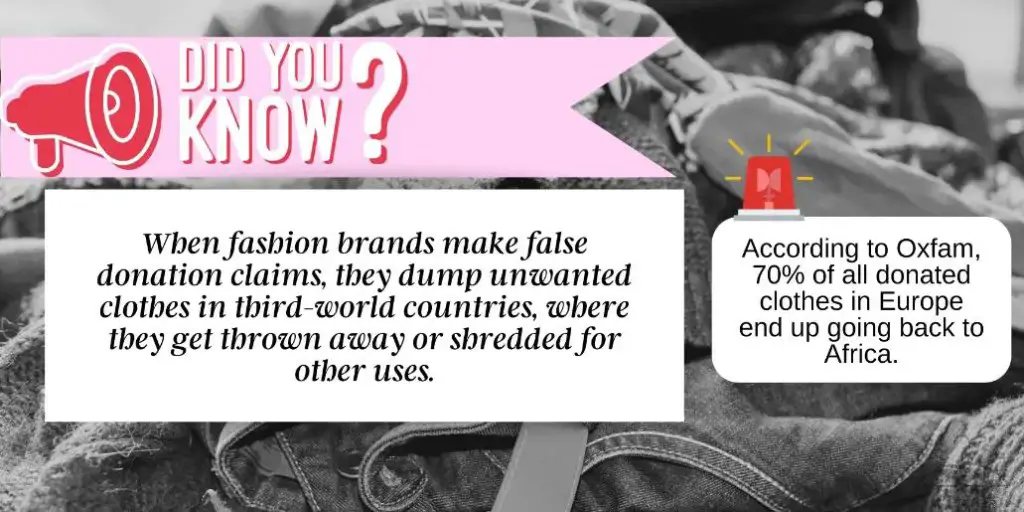
Donation Won’t Make Up For Overproduction
According to the EPA, 84% of donated clothes either get thrown out into landfills or end up in incinerators. What’s more, when it comes to clothing donations, logistical issues might arise. For instance, if a donated batch gets contaminated with mildew, it will get sent to landfills. Alternatively, if a batch is of poor quality, which occurs in 20-50% of donated clothes, it will also end up in landfills.
Overall, donation is a seemingly guilt-free alternative to throwing away clothes. However, it is overall a shady practice – brands should only revert to it as a last resort. After all, our planet has enough clothing to dress the next 6 generations of the human race. The world does not need more synthetic apparel, and no donation program will ever change that.
So, when fast fashion brands boast of their questionable programs, know that it’s always for one reason – to avoid corporate responsibility and mislead consumers. BloomChic’s heedless production, with no caution toward the end of the items’ lifecycle, generates irreversible textile waste. Therefore, no amount of clothing donations can offset the brand’s negative impact.
Absence of Recycling Initiatives
The brand currently regards the following two practices as recycling: donating clothes to shelters and selling unpopular items on a discount. However, this is nothing but a deceptive statement.
In fact, BloomChic has no recycling program in place. What’s worse, its garments, containing multiple materials – that is, fabric blends – are currently almost impossible to recycle. For this reason, most clothing produced by BloomChic is destined for landfills.
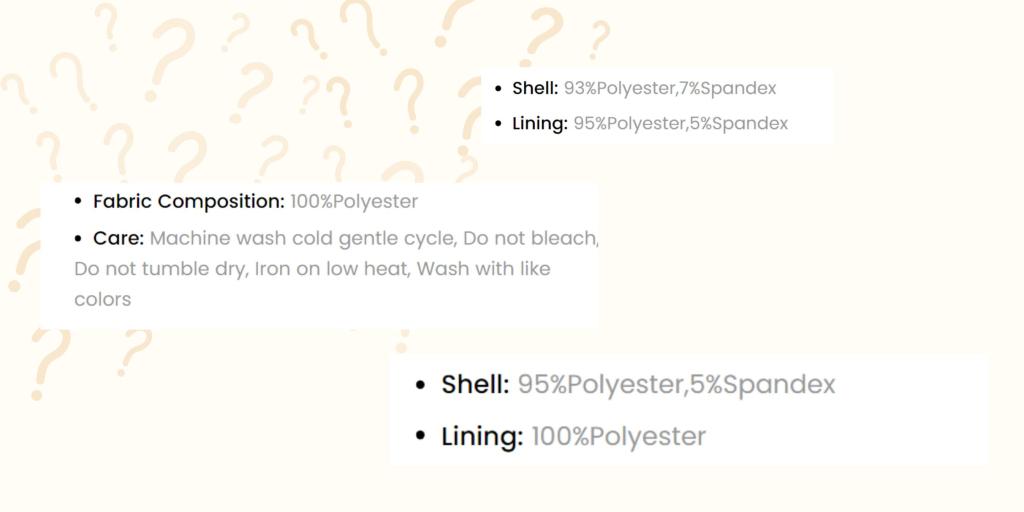
Concerns Around Synthetic Fabrics
When asking the question, “is BloomChic fast fashion?”, the easiest way to clear up your doubts it looking at its fabrics. If you scrutinize the “materials & care” section of each product on BloomChic, you will notice the dominance of synthetic materials – be it spandex, polyester, or rayon.
To illustrate, non-stretchy tops and blouses on BloomChic are made of 100% Rayon, which is considered one of the most toxic materials in fashion. Derived from wood pulp, the fabric undergoes chemical-intensive processing, being sprayed with carbon disulfide and sodium hydroxide.
These compounds not only affect us, the consumers, but also the garment workers involved in their production. Studies show that exposure to carbon disulfide in the rayon industry triggers reproductive health hazards among female garment workers, as they reach menopausal age earlier and suffer from menstrual disorders.
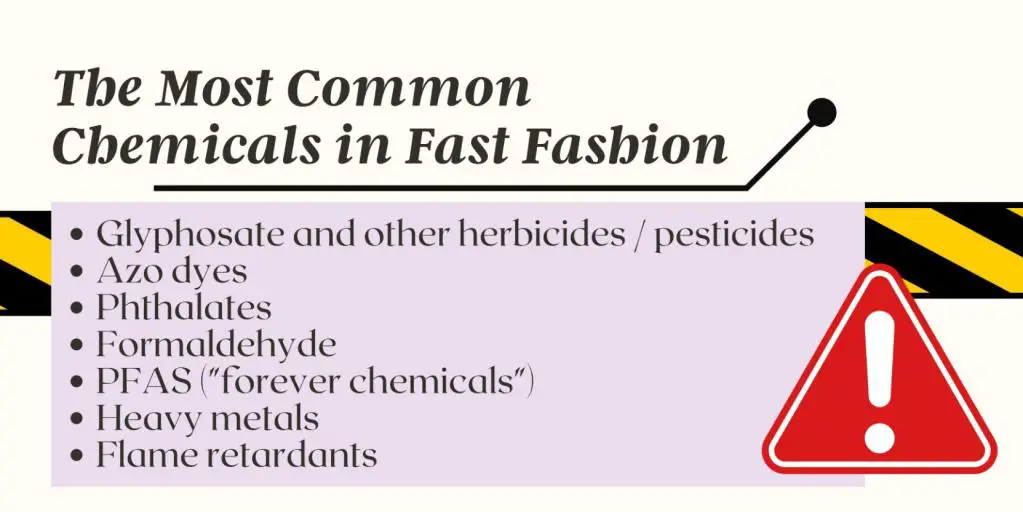
Potential Health Hazards in BloomChic Clothing
Made of petrochemicals, synthetic fabrics are non-biodegradable, contaminating the environment while spreading harmful toxins into our closets. Prevalent in fast fashion, they contain hazardous chemicals, such as PFAS, formaldehyde, azo dyes, and antimony trioxide, which harm our health as we wear them.
With no commitment to natural fabrics, BloomChic exposes its customers to a myriad of hazardous compounds. The brand neglects the health of its consumers, as toxic chemicals breach into their bodies, which can snowball into major health concerns, such as Multiple Chemical Sensitivity (MCS), skin irritation, contact dermatitis, eczema, and more.
Accessibility: Is It Really Possible?
BloomChic takes in pride in its low price range, claiming that customers “shouldn’t have to pay a fortune” to dress well. However, behind affordable price tags lies a much more sinister story.
Fast fashion isn’t free. Someone somewhere is paying.
Lucy Siegle
In the final markdown section of the website, BloomChic sells clothing for as low as $5.80 and $7.80. This means that in order to gain profit, the brand must keep their costs ultra-low. Unfortunately, such operations involve lowering the wages of garment workers overseas.
The brand employs factories in southern China, where workers tackle unethical working conditions. As of March 2023, migrant workers in Guangdong province have refused to work at factories, fighting for their rights and rejecting low rates. By this, they’ve protested the lack of labor rights in the area, with workers suffering from extreme poverty – living from paycheck to paycheck.
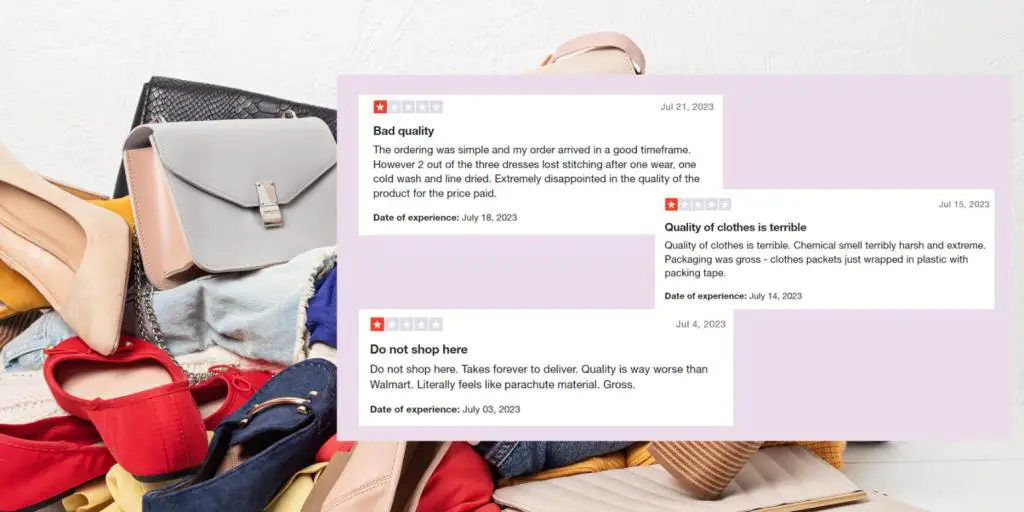
Cheap clothes are always unethical
This might be a hot take, however, we believe that fashion should not be cheap. Low-cost clothing are always made in factories that operate with razor-thin margins, which risk the health and safety of their workers. In other words, a cheap price tag always hides unethical practices.
Low Quality Clothes: Planned Obsolescence
Besides, the quality of BloomChic’s apparel is low. This is due to planned obsolescence — a practice, where brands produce flimsy, low-quality clothing, so that it breaks down soon and you keep coming back for more. This practice undermines sustainability and customer trust.
On Trustpilot, the brand has received roughly 7k reviews and flaunts an average of 4.0 stars. Yet, among the reviews, many customers have complained about the brand’s poor customer service and lack of quality.
To illustrate, as one of the reviewer states, “2 out of 3 dresses lost stitching after one wear.” Another reviewer on Trustpilot complains about a strong, chemical smell coming out of BloomChic clothing, which indicates the presence of formaldehyde in their items. This, once again, highlights the health hazards lurking in the brand’s clothing.

Is BloomChic Fast Fashion? Tracing its History
With stylish and inclusive apparel, BloomChic was founded in 2021 in Los Angeles, California. At its infancy, the brand featured sizes 12 through 22. However, a private equity firm, L Catterton, kickstarted a new chapter in BloomChic’s growth in 2022, due to which it started offering sizes up to 30.
With the newly-acquired funding from L Catterton, BloomChic not only diversified its size range but also aimed at scaling its operations. The vision behind the funding was clear – the CEO, Bill Hu, boasted of L Catterton’s competence in “[building] iconic brands, [broadening] product suites, [and entering] new geographic markets.”
Yet, questions arise when scrutinizing L Catterton’s portfolio. Apart from BloomChic, the firm scaled Savage X Fenty and ThirdLove, which are considered fast fashion brands. So, could the initiative put BloomChic on the same path?

The Inclusivity Appeal
What attracts customers to BloomChic lies in its emphasis on inclusivity, diversity, and authenticity. Currently, the fashion industry falls short of plus size clothing options, as popular brands offer a narrow spectrum of sizes. BloomChic, however, rejects the status quo.
The brand has gained popularity, due to its fluidity of sizes, in tandem with affordable and trendy clothing. After all, BloomChic places its marketing around the customer, even eliminating the use of photoshop in their image production. This makes the customer feel heard and appreciated while inspiring body confidence.
Hence, the concept behind BloomChic is admirable, as it presents a wider and authentic image of beauty. However, as mentioned above, the brand has a lot to do when it comes to sustainability.
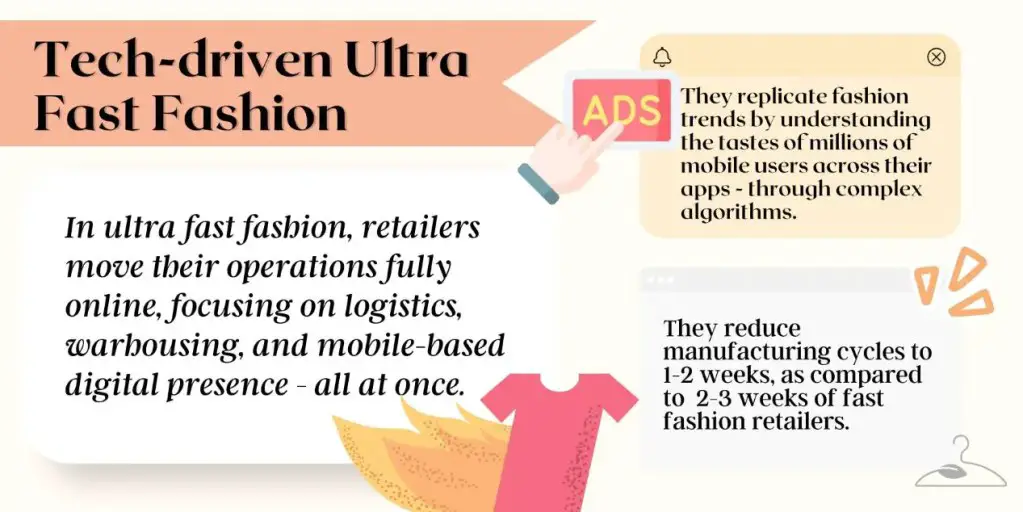
BloomChic As Tech-Enabled Fashion
With the mission to serve the underrepresented plus-size community, BloomChic has set up a new system around trends. It has launched a tech-driven approach to new collections, potentially emulating ultra-fast fashion brands.
Is BloomChic the Same As Shein?
While some regard BloomChic as a plus-size iteration of Shein, the two are different companies. However, they share many similarities when it comes to the use of synthetic fabrics, overproduction, low quality apparel, and cheap prices.
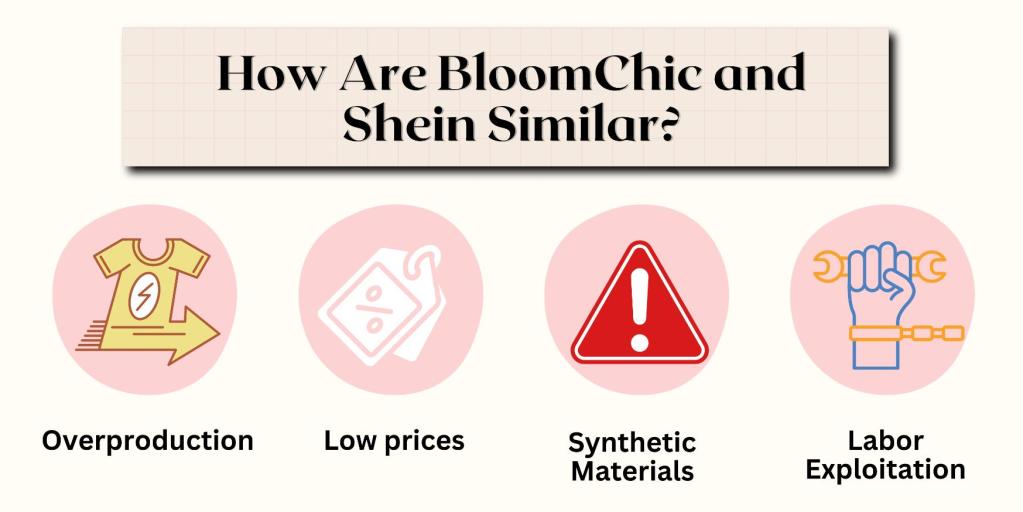
How Is BloomChic Similar to Shein?
BloomChic’s so-called “data-driven product development” model is similar to the one of tech-driven yet unethical retailers. For instance, Shein harvests data about its product selection in real time, which allows it to forecast trends more accurately. By the same token, BloomChic strives to track and prioritize popular patterns, color schemes, and materials through data – in order to identify winning trends.
Creating Trends Through Data
Put simply, Shein predicts potential sales based on how fast its items take off. If the items fail right in the beginning, they launch new ones with different designs. After all, a thousand new garments appear every day on the Shein app, so the wave of novelty never stops.
The main principle behind tech-driven fashion, therefore, is simple. Certain items, which never make it to the top pages due to unfavorable consumer feedback, get replaced with new ones. Rinse and repeat.
Given that, the complexity of BloomChic’s trend forecasting algorithms, as well as its similarities with Shein, are unclear. That is, they’re only a matter of speculation. However, like Shein, the brand may be harvesting personal data on consumers – so, beware of privacy concerns when using the BloomChic app.

Unclear and Unethical Supply Chains
With no transparency around labor practices, both BloomChic and Shein source their materials from southern China. While the former’s production sites remain hidden, the latter relies on wholesale factories that violate China’s labor laws.
According to The Cut, at Shein factories, garment workers “wash their hair during lunch breaks.” If they happen to make a mistake on a garment, factories rob them of two-thirds of their daily rate. Such illegal practices are likely to occur at other factories as well, especially the ones employed by BloomChic.
Currently, BloomChic sources its items from various countries – without disclosing its stances on labor exploitation. With a lack of transparency, the brand owns no physical stores, yet churns out new collections with record-low prices. Such business model necessitates the use of cheap labor, which is why fast fashion brands refuse to disclose supply chain information.
Thus, both Shein and BloomChic avoid corporate accountability, making garment workers suffer under inhumane conditions and paying them poverty wages.

BloomChic Alternatives
Looking beyond BloomChic, there’s a vibrant world of sustainable fashion waiting to be discovered, which makes us believe that when it comes to plus-size clothing, we are not limited to fast fashion. Rather, conscious brands are actively working towards championing both environmental sustainability and body diversity.
For example, brands Miakoda and Mien stand out as beacons of local, US-based production. Miakoda brings us comfort-focused casual wear, loungewear, and yoga attire up to size 4X, while Mien crafts minimalist classics in Los Angeles, extending their sustainable offerings to size 3X. Both brands exemplify how local production can merge seamlessly with size inclusivity.
By the same token, Tuesday of California takes an innovative approach by utilizing deadstock fabrics, providing an extraordinary size range from XXS to 7X.
Moreover, in the realm of specialized sustainable wear, Girlfriend Collective has revolutionized activewear with their recycled materials and impressive size range up to 6X. Their garment recycling program demonstrates their commitment to circular fashion. Warp + Weft focuses on sustainable denim, offering sizes from 00 to 24, while implementing innovative water recycling practices.

Is BloomChic Fast Fashion? Final Thoughts
Supporting a size-inclusive industry, BloomChic’s business model is not sustainable, as it perpetuates the use of non-biodegradable, synthetic clothing while potentially partaking in labor exploitation. So, considering that BloomChic qualifies as fast fashion, what can you, as a consumer, do to avoid it?
Recommendations for Consumers
If BloomChic aligns with your budget or size needs, consider the following steps:
- Explore Alternatives: Seek out sustainable plus-size brands whenever possible.
- Limit Purchases: Avoid overconsumption to minimize waste.
- Build a Capsule Wardrobe: Invest in versatile, high-quality pieces for long-term use.
PRO Tip: Keep in mind that you don’t need to buy a lot of clothes to be fashionable. Start with a few basics, build a minimalist capsule wardrobe, and find joy in your eco-friendly closet.

Frequently Asked Questions
BloomChic offers low prices due to its fast fashion model, which relies on synthetic fabrics and overseas manufacturing with low labor costs. This business structure allows for high-volume production at minimal expense, but it raises concerns about unethical practices, including worker exploitation and environmental harm.
BloomChic has implemented eco-friendly packaging made from recycled materials and a small-batch production model to reduce overstock. However, the brand lacks comprehensive recycling initiatives and continues to use synthetic fabrics, which harm the environment.
BloomChic’s reliance on synthetic fabrics like polyester and rayon can pose health risks due to the presence of toxic chemicals such as PFAS and formaldehyde. Prolonged exposure may cause skin irritation, allergies, or other health issues.
BloomChic empowers women by offering clothing in sizes 10–30 and featuring models from diverse backgrounds. The brand avoids photo editing to celebrate natural beauty and promote body confidence.
No, donations do not compensate for overproduction. Most donated clothing eventually ends up in landfills due to contamination, low quality, or logistical challenges, contributing to environmental degradation.
We recommend that you avoid shopping at BloomChic, as it is a fast fashion brand. However, if you have to, consider limiting your purchases, opting for versatile pieces, and avoiding overconsumption. Alternatively, explore sustainable plus-size brands to align your wardrobe with ethical and eco-friendly values.


i have been buying their dresses for several years…none have fallen apart, and they look nice. its an affordable way for me at least to wear nice looking dresses, and not spend tons of money.
This was very helpful. I have been shopping at Ulla Popken, a German company that has plus sizes, for years. Their quality and style has always been excellent. I’m still wearing stylish clothes bought from them in 2009. Their pricing is fair. They have discounts and a lot of their clothing is cotton, with some viscose. I buy mostly cotton tops from them, especially those with the Oeko-tex labels. Their fashions tend to be retro, which I love and also high end elegant.